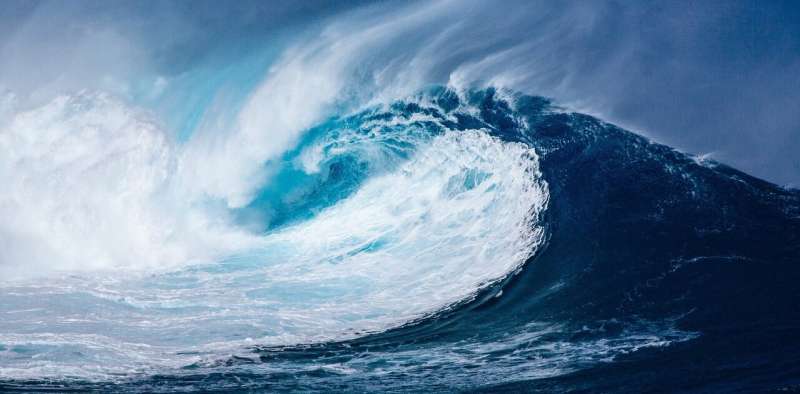Scientists take high-speed video of waves to better understand sea spray

Waves crashing on seashores generate tiny droplets of water known as sea spray. Sea spray moves heat and water from the ocean to the atmosphere, but scientists are unsure which part of the wave-breaking process generates the most spray, whether it be wind shear, splashing, or the popping of air bubbles at the surface of the wave.
To address this question, scientists generated breaking waves experimentally in a lab. They used a wave tank about the size of an average bowling lane to create miniature versions of plunging breakers, where the wave crest curls over itself and plunges downward. The water is colored with a fluorescent dye illuminated by laser light.
The scientists captured slow motion video of the waves to observe the sea spray generation process in unprecedented detail. This video shows footage of one of their wave experiments from two distinct vantage points. In the first shot, the camera moves along with the wave as it passes, and in the second, the camera is stationary relative to the wave. Clearly visible are tiny air bubbles popping and generating sea spray as the wave travels through the tank. The droplets, many of which are smaller than are visible in the video, were measured using in-line high-speed holographic movies.
The experiments show sea spray droplets are formed at three different times during the wave-breaking process: when the plunging crest hits the water surface, when air bubbles trapped by the plunging jet burst, and later when smaller bubbles reach the surface and burst after the break is over. The results, published in AGU's journal Geophysical Research Letters, can help scientists improve their understanding of how water and heat are transported to the atmosphere from the ocean when waves crash on a shore.
More information: M. A. Erinin et al. Spray Generation by a Plunging Breaker, Geophysical Research Letters (2019). DOI: 10.1029/2019GL082831
Journal information: Geophysical Research Letters
Provided by GeoSpace


















